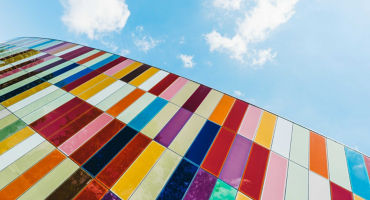“Cash rules everything around me” – Wu-Tang Clan
Wu-Tang Clan’s famous song may speak to the future of US credit markets in the wake of recent regional bank failures. Much of the blame for these failures has rightly gone to bank executives who, after seeing a surge in deposits during the COVID-19 pandemic, invested excess cash in bonds, particularly mortgages, at generationally low yields. Not hedging negative convexity is a cardinal sin for a bank and risk management was clearly lacking. However, it’s worth examining why deposit growth was so dramatic during the pandemic compared to the global financial crisis (GFC).
Comparing QE: GFC vs COVID-19 pandemic
In both the GFC and the pandemic, the US Federal Reserve (Fed) increased its balance sheet by roughly the same amount relative to nominal GDP (19% from 2008 to 2014 and 18% from 2020 to 2021). However, the nature of quantitative easing (QE) between the two regimes was vastly different.
In the aftermath of the GFC, losses were destroying money and banks hoarded Treasury securities on the asset side of their balance sheets. When the Fed bought assets from banks, it was simply replacing securities for excess reserves without making meaningful changes to the liability side of banks’ balance sheets. This type of asset swap tends to be less inflationary. It’s one of the reasons that Japan has struggled to generate inflation as its banks have had a similar experience following their own balance -sheet recession in the late 1980s.
The QE response during the pandemic was different. During this period, most of the Fed’s security purchases came from the household sector with the cash finding its way to the liability side of bank balance sheets. This high-powered form of QE, combined with fiscal stimulus, flooded the bank system with deposits and generated the inflation we experience today.
Where does liquidity go from here?
The question becomes: Is there still ample money in the system given the quantitative tightening program the Fed initiated last June? The short answer is that, for now, there is enough liquidity. However, this is likely to change, as much of the Treasury bill issuance following the debt ceiling resolution will likely come out of bank reserves.
Thus far, the Fed is not concerned. Fed Governor Christopher Waller has argued that when thinking about liquidity one should combine bank reserves with money in the Fed’s reverse repo facility (RRP). This is still around 19% of GDP and substantially above the 8% level of early 2020. Waller’s argument is that banks need to raise deposit rates to compete with money market funds, but there is enough cash in the system overall.
However, even if deposit rates got closer to the yields that money market funds offer, the regional bank failures have illustrated the rationale for institutional holders to keep cash outside of the banking system given that the Federal Deposit Insurance Corporation only insures deposits up to $250,000. If money stays in the RRP, as I would expect, it is likely that bank liquidity will look challenged in the fourth quarter of this year. This will force regional banks to slow lending growth dramatically — something we’re already seeing within commercial and industrial loans.
Avoiding a credit crunch and facing cash scarcity
The economy has so far avoided a credit crunch because we’re still working off the effects of the pandemic-induced liquidity boom. However, this is rapidly changing. Money is likely to be quite tight by the fourth quarter of this year and credit spreads don’t reflect the potential for tighter lending standards, with high-yield spreads at 426 basis points as of June 23.
One pushback to this idea is that private credit, which has grown rapidly since 2015, can step in and finance companies that banks won’t, thus avoiding a credit crunch. I am skeptical this will occur. The asset class has yet to go through a meaningful default cycle and in a downturn, it’s unclear how much capital and dry powder is truly available to distressed companies.
Even if private credit is available to provide capital in a downturn, these loans would be secured and structurally senior to high-yield debt in the capital structure. This will mean lower recovery rates for unsecured debt, a trend we’re already starting to see that has yet to be reflected in spreads. Credit investors beware, cash really does rule everything around us and will be scarce in the latter half of this year.








